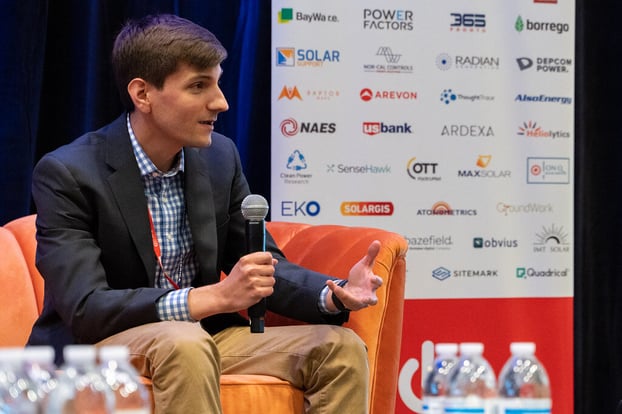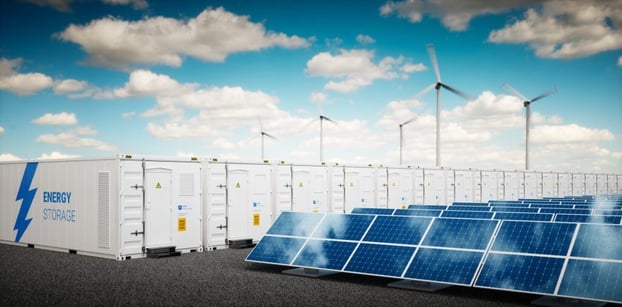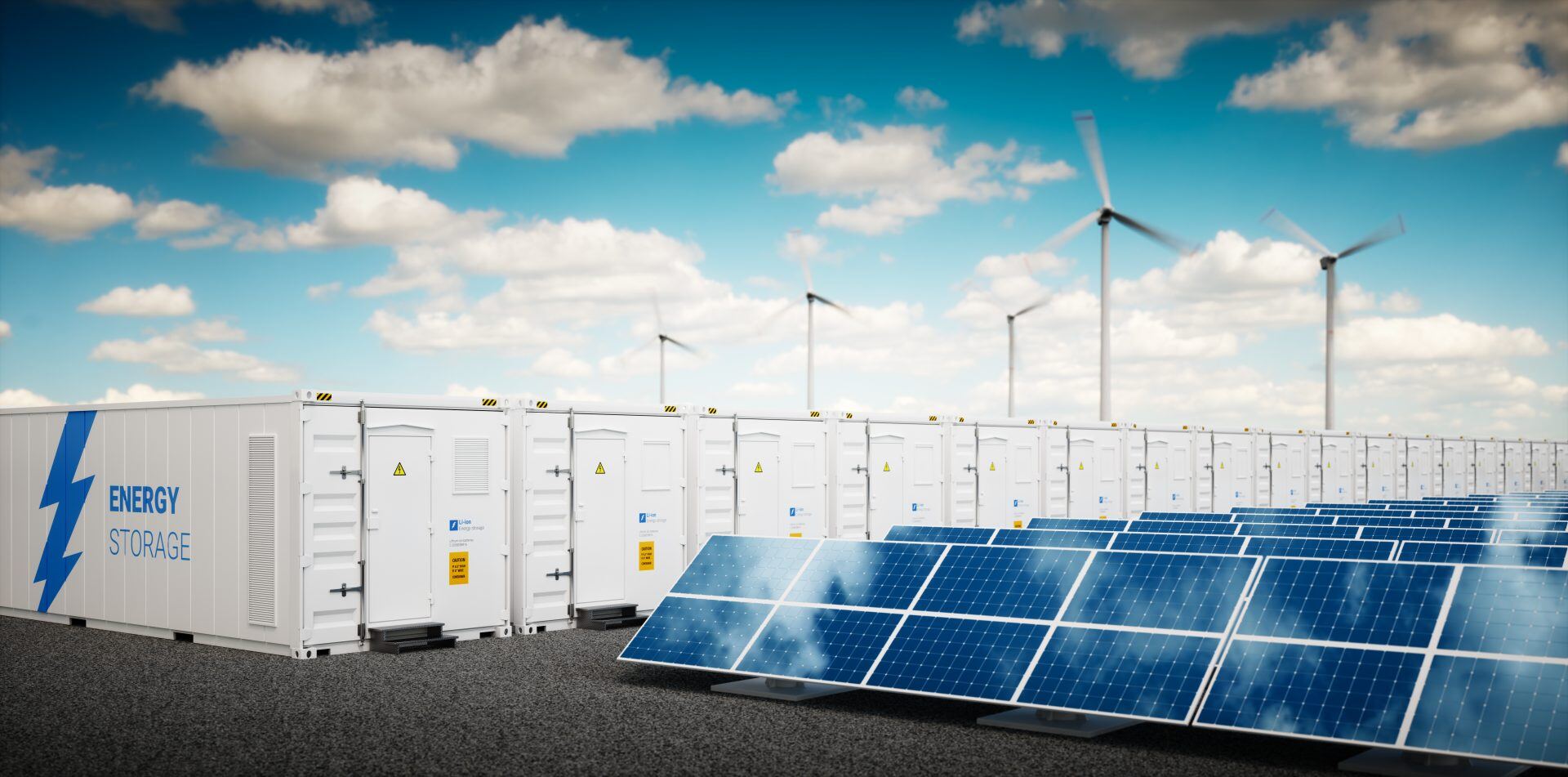THREE TAKEAWAYS FROM SAMNA 2022
Will Troppe, Director of Product at Power Factors, shares three key insights he gleaned from conversations, presentations, and panels at Solarplaza's SAMNA 2022.

Stay in touch
Subscribe to our newsletter for expert insights, company updates, and the latest in renewable energy management solutions.
Will Troppe, Director of Product at Power Factors, spoke at Solarplaza’s Summit Asset Management North America in April 2022. In this article, he shares three key insights he gleaned from conversations, presentations, and panels at the event.
Earlier this month, North America’s fleet-scale solar PV owners, operators, asset managers — and, of course, service providers and vendors — gathered in Oakland, CA, for Solarplaza’s annual Summit Asset Management North America (SAMNA).
This was the first time much of the industry has gathered in person since 2019. The energy was palpable, with people exhibiting a renewed dedication to our shared mission of combatting climate change through solar energy.

Supply chain constraints notwithstanding, 2021 was a record year for new solar PV installations in the United States. (We’re still holding our breath for 2022.) Over 12GW of utility-scale solar plants came online for a total of over 60GW cumulative installed, according to American Clean Power. Together, total cumulative installed utility-scale solar, wind, and energy storage broke the 200GW threshold in the US.
SAMNA brought together those charged with the long-term health and performance of this increasingly large, disparate pool of assets. Here are three key points I took away from the conference floor:
1. BENCHMARKING’S VALUE OUTWEIGHS RISKS FOR OPERATORS
My biggest surprise was asset owners’ and managers’ comfort with — and more so, desire for — quality benchmarking tools. Benchmarking enables users to compare the performance of assets within a fleet to assets outside it across dimensions like geography, technology, manufacturer, O&M contractor, and more.

Analysts typically use benchmarking to identify relative underperformance and trigger remediation. If my plant’s Performance Index is significantly lower than the average of all nearby plants, for example, I may be able to identify why it’s lower (say, an underperforming O&M contractor) and act to improve performance (find a new contractor).
If the plant is underperforming relative to other plants serviced by that same O&M contractor, and I notice the contractor’s mean time to respond is lower for the assets they serve outside my fleet, now might be the time to renegotiate my contract.
It’s easy to understand the power of an aggregated dataset for benchmarking purposes, but unlocking this value requires disparate data owners to create this combined dataset in the first place.
Some owners are reluctant, recognizing that maintaining a useful dataset might prevent it from being properly anonymized or aggregated. Other industry incumbents with gigawatt-years of operating data may view their own datasets as a competitive advantage; sharing this with others, even anonymized, could erode this dominance.
But most owners, asset managers, and operators speaking throughout the event expressed wholehearted enthusiasm toward benchmarking. For them, the benefits outweighed the risks: they’re willing to give up a bit of anonymized proprietary data to help move the industry forward.
2. WE’RE FINALLY BEYOND THE DECADE OF “THE YEAR OF BATTERY STORAGE”
It’s felt like someone has prominently declared the current year “the year of storage” every single year of the last decade. Fortunately for all of us, this era appears to have passed. Battery energy storage, affectionately abbreviated “BESS,” has tripped its tipping point because fleet-scale asset managers, owners, and operators are managing storage assets alongside their solar fleets at scale.

Indeed, according to American Clean Power, the US installed 2.5GW of standalone BESS in 2021, for a total of 4.5GW operational. And the US installed 4.5GW of its 6GW of operational solar-plus-storage in 2021 — 27x the amount installed in 2020.
Our solar customers are living this reality, and they’re increasingly looking to Power Factors as their BESS performance optimization solution. And solar market participants are well-positioned to apply their skillsets and scopes to storage. Domain knowledge, like the asset classes themselves, is complementary.
But make no mistake: storage market players still face plenty of challenges. We are in the early days, and if we assume storage is a key element to achieving our renewable generating targets in the 2030s, the industry must navigate its learning curve quickly.
At SAMNA, I had the honor of sharing some initial insights from the early days of fleet-scale BESS asset management on a panel. We discussed the implications of an asset class in which not all operating hours are equal. Since each cycle degrades a battery’s capacity, how you operate a BESS asset has huge implications on its economic and operational life. And optimizing one doesn’t necessarily maximize the other. Suffice to say that controls strategies for BESS assets are much more complex than for solar.
Of course, a degraded battery system can return to its original capacity through augmentation — the installation of additional batteries or cells at the site. Biannual augmentation is becoming standard, presenting a new challenge for owners unaccustomed to overseeing a site that’s in a continuous stage of construction.
Finally, we touched on the challenges of properly allocating and tracking risk across disparate BESS stakeholders through contracts. OEM warranties are one such contract. To hold an OEM accountable for its warranty, the burden is on the operator to demonstrate continuous operation of the BESS asset was within the bounds of the warranty operating envelope — through interval data spanning the asset’s entire life.
BESS operators need to implement strategies to store this data at scale, develop informed controls strategies for optimal management, apply and expand existing solar O&M skills into the BESS sector, and combat uncertainty through a lot of good data.
3. CO-INNOVATION ESSENTIAL TO HELP CUSTOMERS ADDRESS THEIR CHALLENGES
My favorite part of the live event was talking with people in-person again — our customers, prospects, and potential technology partners. I was reminded that building a product is not just an engineering exercise, it’s also a social exercise. It’s about talking with our users directly and building empathy around their emerging challenges. And it’s about building products that make them — our friends — happy by solving those challenges.

And there are still challenges. We’re working with our BESS customers to encourage battery OEMs to expose additional data signals, overcoming challenges that come from operating in an early-stage, supply-constrained market. We’re developing BESS analytics that work well at fleet scale, enabling our customers to track round-trip efficiency year-round, without taking equipment offline. And we’re exploring partnerships with companies that provide complementary services and datasets so we can deliver more cohesive products and better serve our mutual customers.
I believe our future, and our ability to positively move the clean energy industry forward, is predicated on our ability to pursue emerging opportunities alongside our customers. I look forward to building the future through co-innovative collaboration. Stay tuned.
Will Troppe is Director of Product at Power Factors where he oversees the company’s performance management software products, optimizing 125GW of clean energy globally. In this role, Will connects data, analytics, and operations to help asset owners, managers, and operators generate more clean energy and increase ROI. Will began his career as Power Factors’ first hire, contributing to early product efforts and running fleet-scale onboarding projects for initial clients. Connect with Will on Linkedin!





![[Article 7] How to Select the Right Software Solution for BESS Asset Management](https://www.powerfactors.com/hubfs/solar-energy-panels-clean-energy-background-WKY4FJ5.jpeg)